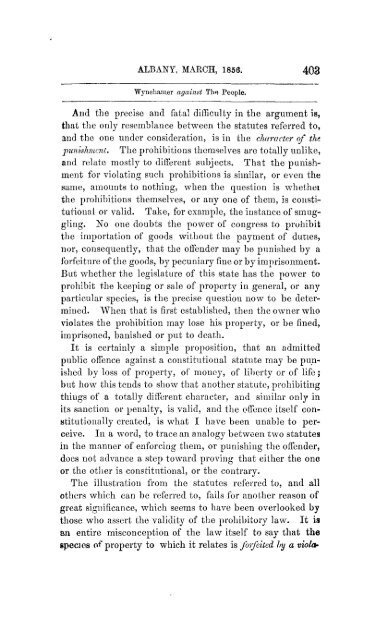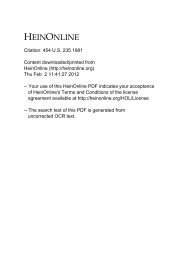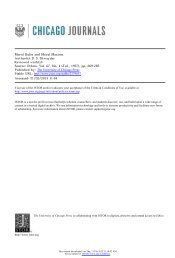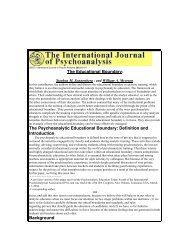Wynehamer v People.pdf - The University of Texas at Austin
Wynehamer v People.pdf - The University of Texas at Austin
Wynehamer v People.pdf - The University of Texas at Austin
You also want an ePaper? Increase the reach of your titles
YUMPU automatically turns print PDFs into web optimized ePapers that Google loves.
ALBANY, MARCH, 1856. 403<strong>Wynehamer</strong> against Thi <strong>People</strong>.And the precise and f<strong>at</strong>al difficulty in the argument is,th<strong>at</strong> the only resemblance between the st<strong>at</strong>utes referred to,and the one under consider<strong>at</strong>ion, is in the character <strong>of</strong> thepunishment. <strong>The</strong> prohibitions themselves are totally unlike,and rel<strong>at</strong>e mostly to different subjects. Th<strong>at</strong> the punishmentfor viol<strong>at</strong>ing such prohibitions is similar, or even thesame, amounts to nothing, when the question is whetheithe prohibitions themselves, or any one <strong>of</strong> them, is constitutionalor valid. Take, for example, the instance <strong>of</strong> smuggling.No one doubts the power <strong>of</strong> congress to prohibitthe import<strong>at</strong>ion <strong>of</strong> goods without the payment <strong>of</strong> duties,nor, consequently, th<strong>at</strong> the <strong>of</strong>fender may be punished by aforfeiture <strong>of</strong> the goods, by pecuniary fine or by imprisonment.But whether the legisl<strong>at</strong>ure <strong>of</strong> this st<strong>at</strong>e has the power toprohibit the keeping or sale <strong>of</strong> property in general, or anyparticular species, is the precise question now to be determined.When th<strong>at</strong> is first established, then the owner whoviol<strong>at</strong>es the prohibition may lose his property, or be fined,imprisoned, banished or put to de<strong>at</strong>h.It is certainly a simple proposition, th<strong>at</strong> an admittedpublic <strong>of</strong>fence against a constitutional st<strong>at</strong>ute may be punishedby loss <strong>of</strong> property, <strong>of</strong> money, <strong>of</strong> liberty or <strong>of</strong> life;but how this tends to show th<strong>at</strong> another st<strong>at</strong>ute, prohibitingthings <strong>of</strong> a totally different character, and similar only inits sanction or penalty, is valid, and the <strong>of</strong>fence itself constitutionallycre<strong>at</strong>ed, is wh<strong>at</strong> I have been unable to perceive.In a word, to trace an analogy between two st<strong>at</strong>utesin the manner <strong>of</strong> enforcing them, or punishing the <strong>of</strong>fender,does not advance a step toward proving th<strong>at</strong> either the oneor the other is constitutional, or the contrary.<strong>The</strong> illustr<strong>at</strong>ion from the st<strong>at</strong>utes referred to, and allothers which can be referred to, fails for another reason <strong>of</strong>gre<strong>at</strong> significance, which seems to have been overlooked bythose who assert the validity <strong>of</strong> the prohibitory law. It isan entire misconception <strong>of</strong> the law itself to say th<strong>at</strong> thespecies <strong>of</strong> property to which it rel<strong>at</strong>es is forfeited hy a wola-
















